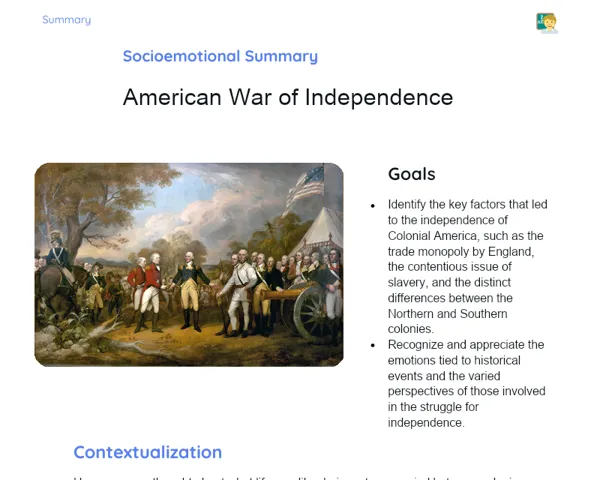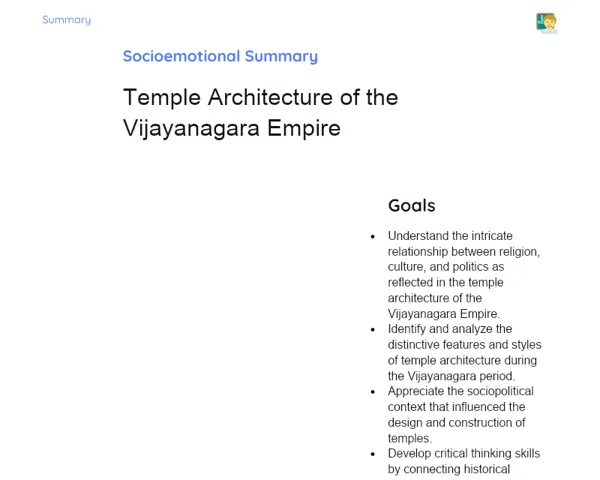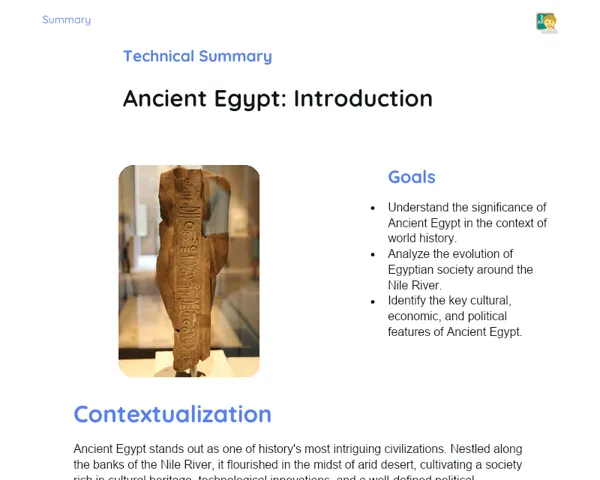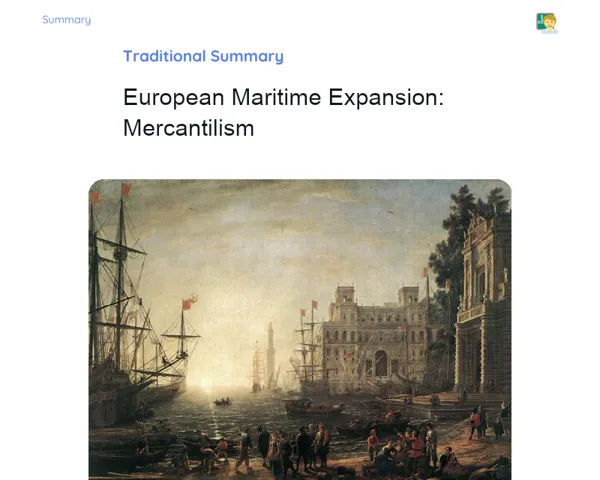Socioemotional Summary Conclusion
Goals
1. Understand the roots and development of Islam, identifying key events and influential figures.
2. Explore the growth of Islam and the establishment of caliphates during the Middle Ages.
3. Enhance socio-emotional skills such as self-awareness, self-regulation, and empathy through the study of history.
Contextualization
🌟 Did you know that Islam, among the world's major religions, has significantly shaped human history? From the Arabian Peninsula to various parts of Europe and Asia, the spread of Islam did more than just alter political landscapes; it also encouraged cultural, scientific, and economic exchanges. Let’s delve into how it all began, the remarkable personalities involved, and how this fascinating religion spread worldwide! 🌍📚✨
Exercising Your Knowledge
Origins and Formation of Islam
Islam began in the 7th century in the Arabian Peninsula, where followers regard Muhammad as the last prophet. He received revelations from Allah (God) that were later compiled into the Quran, the holy text of Islam. The Muslim community (Ummah) was founded during the Hijra, Muhammad’s migration from Mecca to Medina, marking the start of the Islamic calendar.
-
Revelations: Muhammad conveyed the divine message through the angel Gabriel, which serves as the basis of the Quran.
-
Hijra (622 A.D.): The migration of Muhammad from Mecca to Medina that solidified the creation of the Ummah.
-
Foundation of the Ummah: The establishment of a unified community of Muslims adhering to Muhammad's teachings.
Expansion of Islam
After Muhammad's passing, Islam quickly spread across the Middle East, North Africa, and parts of Europe. This expansion was driven by military conquests and political agreements. The Umayyad and Abbasid caliphs were instrumental in propagating Islam, forming empires that encouraged cultural and scientific progress.
-
Military Conquests: Fast and effective expansion achieved through well-planned military campaigns.
-
Political Agreements: Formation of local pacts and alliances that promoted cultural integration.
-
Caliphates: The Umayyad and Abbasid caliphates were key in managing and consolidating the newly acquired territories.
Formation of the Caliphates
With Muhammad's death, disputes arose regarding his succession, leading to the creation of different caliphates. The first Rashidun caliphs laid the foundational groundwork, subsequently followed by the Umayyad and Abbasid caliphates, which centralized authority and sparked scientific, cultural, and economic growth. Cities like Baghdad and Damascus became hubs of knowledge and prosperity.
-
Succession Disputes: Internal strife that led to the establishment of various caliphates.
-
Rashidun Caliphs: The first caliphs who united the Ummah and expanded Islam.
-
Centers of Knowledge: Cities such as Baghdad and Damascus that thrived as cultural and scientific centers.
Key Terms
-
Islam: Monotheistic faith founded by Muhammad in Arabia in the 7th century.
-
Quran: The sacred scripture of Islam, viewed as the literal word of Allah.
-
Ummah: The global community of Muslims.
-
Hijra: The migration of Muhammad from Mecca to Medina in 622 A.D.
-
Caliphate: A system of Islamic governance led by a caliph, the successor to Muhammad.
For Reflection
-
How do the origins and expansion of Islam shape your views on cultural and religious diversity in the modern world?
-
What socio-emotional skills have you utilized or could you have employed while studying this topic to gain a deeper understanding of the emotions and historical viewpoints involved?
-
In what ways can the history of Islam and the establishment of caliphates serve as models for fostering empathy and respect in multicultural and multireligious settings?
Important Conclusions
-
Islam originated in the 7th century in the Arabian Peninsula with Muhammad, viewed as the final prophet, who received divine messages from Allah, which are compiled in the Quran.
-
The swift expansion of Islam resulted from both military conquests and political negotiations, establishing caliphates such as the Umayyad and Abbasid.
-
These caliphates were vital in administering and fostering cultural, scientific, and economic advancements, with cities like Baghdad and Damascus emerging as centers of knowledge and wealth.
-
Understanding the beginnings and growth of Islam enables us to appreciate and respect the cultural and religious diversity that characterizes our world today.
Impacts on Society
The influence of Islam on contemporary society is vast and varied. The historical legacy of Islam is evident in many facets of modern life, from the stunning architecture of mosques to significant advancements in fields like medicine, mathematics, and astronomy. These achievements during the Umayyad and Abbasid periods serve as inspirations illustrating how the exchange of ideas drives progress and innovation.
Importantly, grasping the history of Islam and its repercussions can cultivate deeper empathy and appreciation for cultural differences. In today's globalized world, where we live side by side with individuals from diverse backgrounds and beliefs, recognizing the significance and richness of these contributions helps us foster a more inclusive and respectful society, where differences become bridges to mutual understanding.
Dealing with Emotions
To manage your emotions while studying the origins and expansion of Islam, I suggest an exercise based on the RULER approach. First, recognize any emotions that arise as you encounter new or challenging information. Next, seek to understand the reasons behind these emotions; they may stem from the topic's complexity or the surprises encountered along the way. Name these feelings accurately, such as anxiety, curiosity, or excitement. Following this, express these emotions through journaling or discussing with peers to share your thoughts and feelings. Finally, regulate your emotions using deep breathing techniques we practice in class or take strategic breaks during study sessions to help maintain calm and focus.
Study Tips
-
Create concise summaries of key events and influential figures in the origins and expansion of Islam.
-
Utilize historical maps to visualize the territorial growth of Islam and enhance your geographical understanding.
-
Engage in discussions with friends or colleagues, encouraging debates that reinforce comprehension and develop critical thinking skills.



